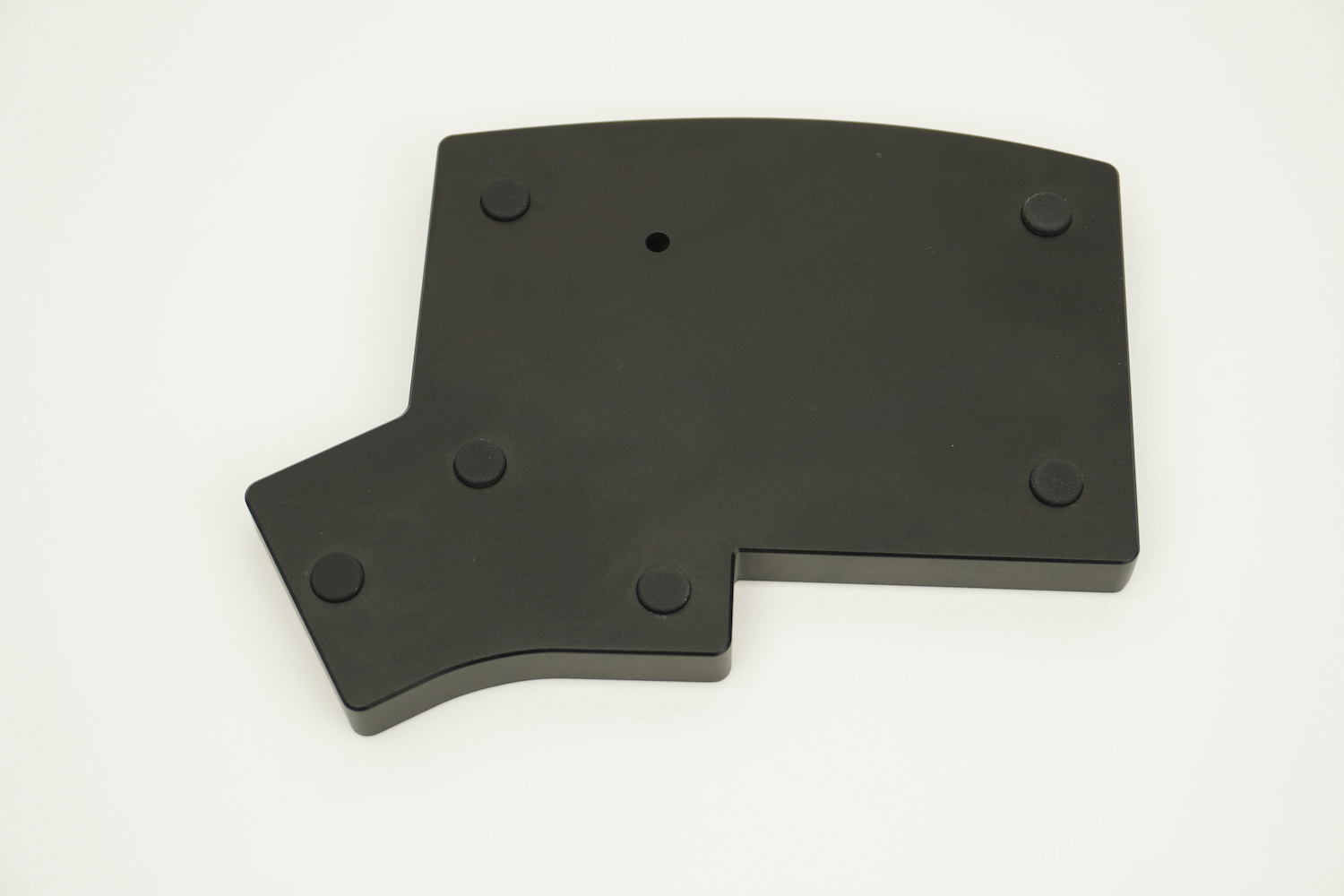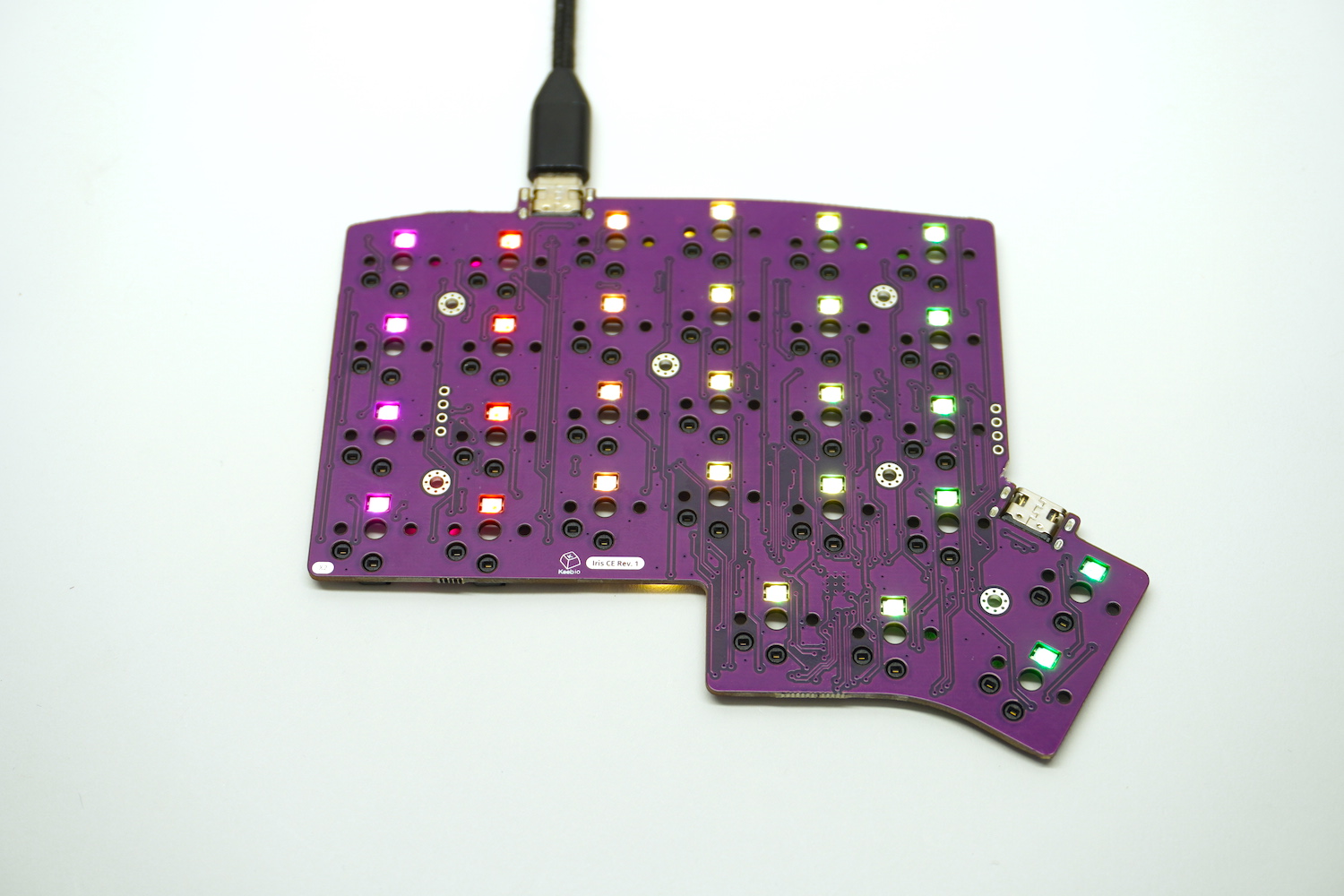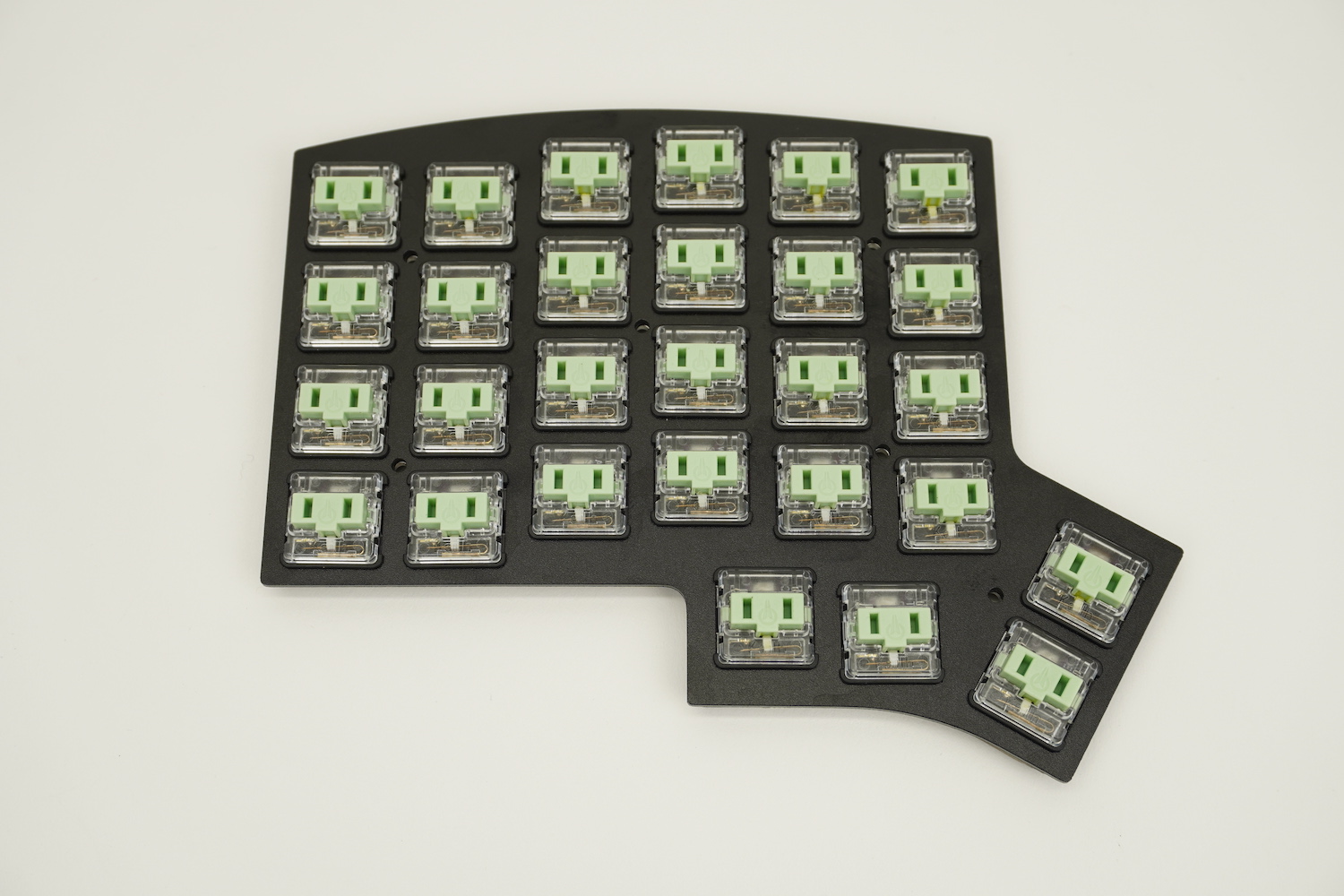Iris CE
Build Compatibility
This build guide is exclusively for the Iris CE (Compact Edition), which only uses Kailh Choc switches.
Parts List
Get your parts ready:

Build Tutorial Video by Keebio
Build Steps Summary
- Inspect/Test Parts
- Add switches
- Assemble Case
- Board Notes
Inspect/Test Parts
Before starting assembly of the board, check if there's any issues with the parts in the keyboard kit.
First, unscrew the switch plate from the tray, and remove the poron piece from the tray.
info
In April 2025, we started including a silicone tray liner that sits at the bottom of the tray to provide physical support for hotswap sockets and to improve the sound of the keyboard.
See if silicone bumpers are installed on the bottom of the case trays.
Check for any major cracks. For the PC version of the case, you may see weld/knit lines near the holes, and that is normal.
Plug in the PCBs and make sure all the LEDs are working.
Add switches
First overlay the poron piece over the PCB. Line up the screw holes with the holes in the piece.
Add the switch plate on top of the poron piece, checking alignment of the screw holes again with the PCB.
Insert some switches are the corners and at the middle and check that things are still lined up correctly. The switches should be flush with the plate. If a couple of the switches don't sit flat on the plate, remove the plate, reposition the poron piece, and try again.
Add the rest of the switches.
Test keys
Before reassembling the case, plug the USB cable into the PCB and test all of the keys to make sure everything is working, as it'll be easier to fix switch issues now than later.
It's best to test using the Key Tester in VIA with Test Matrix mode on, as this will let you test the Lower and Raise keys properly.

Assemble Case
Now that all of the switches have been inserted, it's time to assemble the case.
First place the plate assembly into the tray.
Add screws to each of the holes and screw them in.
warning
If you have the polycarbonate case, do not overtighten the screws.
Doing so may damage the bottom of the case, causing indentations as seen here:

Add keycaps to all of the switches.
Repeat the same process for the other half of the keyboard.
Default Keymap
Here's the default keymap if you need it: Iris Default Keymap
Remapping/reprogramming Board
Looking to remap/reprogram your board? Check out our guide for remapping your keyboard.
While the bottom plates have a hole at the bottom to allow you to access the reset button to allow your Iris to be reflashed if you are using QMK, if you don't want to be flipping your board over to press reset, you can also use one of the following options when remapping your Iris:
- Use VIA to remap your keys. The stock firmware on the Iris CE already has VIA support enabled. This allows you to remap the keyboard without having to reflash the board.
- If you are not using VIA and are using QMK instead, use the
QK_BOOTkeycode to reset the keyboard to allow it to be reflashed without needing to physically press the reset button on the PCB. The default way of usingQK_BOOTis by pressingLower+Ron the left half orRaise+Delon the right half as shown below:

For reference, the Iris CE PCB uses a RP2040 microcontroller.
Turning off RGB LEDs
If you'd like to turn the RGB LEDs off, you can control the RGB settings in VIA.
If you still have the default keymapping, you can also hold the Lower key and then press Left Shift as highlighted below:










